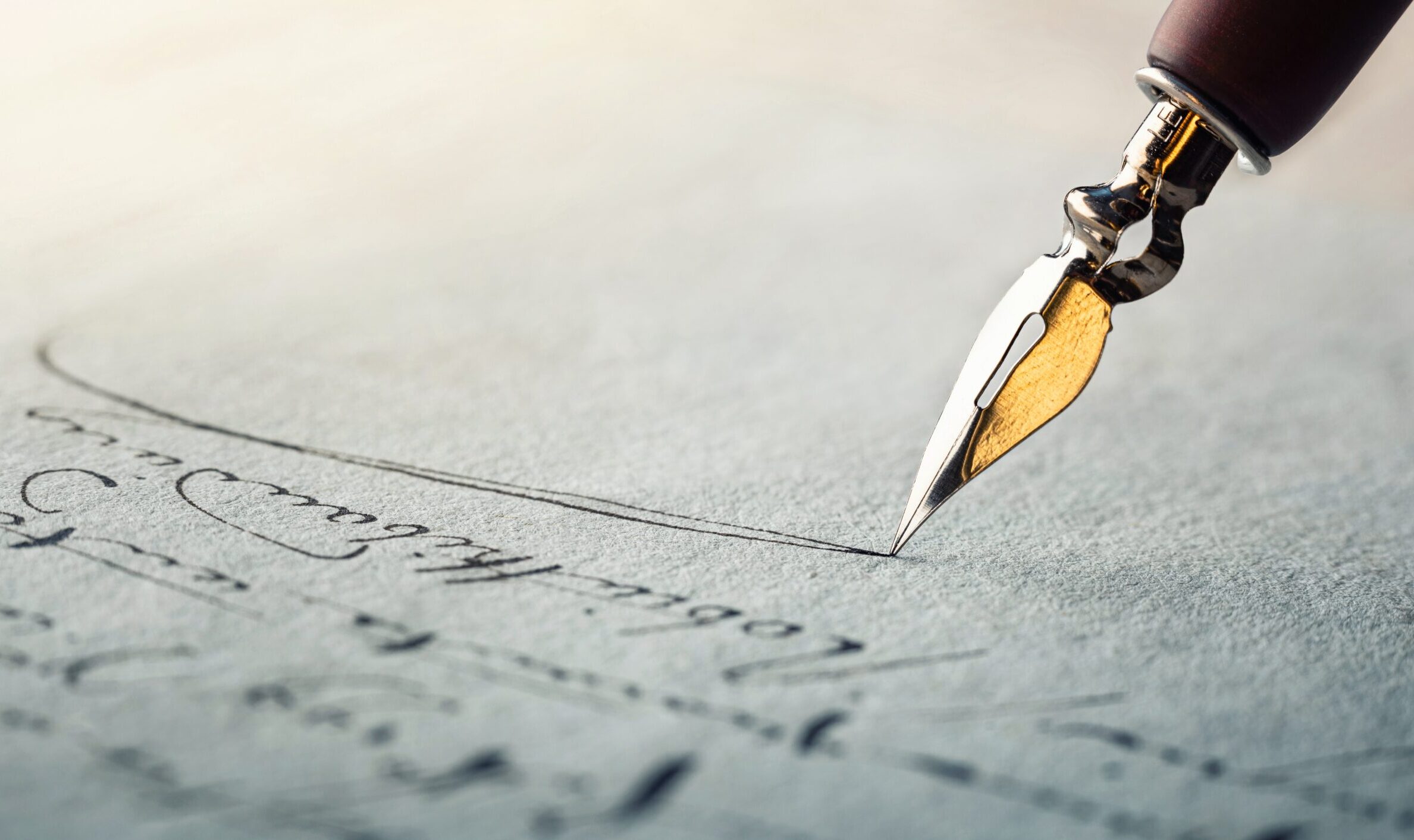What Autopens Cannot Accomplish
John Hancock put pen to parchment, and so should presidents.

Like windmills, energy-efficient lightbulbs, and McDonald’s ice cream machines, the “autopen” has quickly become one of President Donald Trump’s preferred, almost private obsessions. The rest of the world may be in a tizzy about tariffs or going bananas over the “big, beautiful bill,” but in the mind of the 47th president, what looms largest is an automated writing device that, he asserts, was deployed in lieu of the actual signature of former President Joe Biden.
“Whoever used it was usurping the power of the Presidency, and it should be very easy to find out who that person (or persons) is,” Trump wrote on Truth Social last month. “They did things that a Joe Biden, of sound mind, would never have done, like, Open Borders, Transgender for everyone, men in women’s sports, and far more.”
I am not in a position to comment on the policies that govern the proper use of the autopen by the commander in chief. I am also not equipped to comment on the ethical considerations that might inform its use in the particular case of the mentally declining commander in chief. As a near-lifelong accumulator of rare books, I am, however, prepared to comment on the value of a signature—a real one, not automatic, imitative, or otherwise generated by a nonhuman hand.
My earliest significant literary acquisitions were first editions, but in time, I learned that the most sought-after such editions were those to which the author’s signature had been affixed. I can still remember the initial tranche of signed “true firsts” (the chic nomenclature, as I was soon to discover) that entered my collection: This group included Kurt Vonnegut’s Breakfast of Champions, John Updike’s Bech Is Back, and Don DeLillo’s Players—all works of fiction by major 20th-century American authors, and all signed by those same authors. Even as my literary tastes have changed, I have held onto these editions which, with something as simple as a signature, provide me with a link to men I never met and never would meet.
By the time I picked them up, each of these books was decades old, so I didn’t personally witness their writers scrawl, scribble, or (in the case of Vonnegut) elaborately doodle their signature. Yet the very presence of their signature gave me a tangible, if remote, proximity to them. Each volume had once been held in the hands of one of my heroes, and because someone—a reader, a friend, a rare bookdealer—had induced them to commit their names to paper, they left a trace of themselves behind (to quote a memorable line spoken by the character played by Scatman Crothers in the horror movie The Shining).
In fact, Stephen King—the author of the novel The Shining—provided me with my first introduction to the power of a signature. For reasons that are not entirely clear to me, as a grade-schooler I was inordinately impressed by the horror writer, and in a flash of fandom, I wrote him a letter expressing my alleged admiration for his novels and my ambition to become a writer myself. For my trouble, I received in return a mass-produced postcard—you know, the sort in which the writer asserts that he no longer has time to write personal replies to fan mail—and although I was unbothered by the letter’s generic form, I remember asking my father whether King’s signature at the bottom was the real deal. Even then, I understood that an actual signature was superior to one that had been stamped, photocopied, or, indeed, autopenned. (Alas, it was almost surely as mass-produced as the rest of the postcard.)
Over the years, I came into possession of first editions signed by John Cheever, Norman Mailer, and Jules Feiffer—by no means a dazzling collection but, given the young age at which I acquired these tomes, a moderately impressive list. I was even fortunate to eventually make the acquaintance of several authors who, upon my request, not only signed but inscribed their books to me personally. Generally, these books were written by professional colleagues rather than genuinely famous people, but Peter Bogdanovich—the esteemed director of The Last Picture Show, What’s Up, Doc?, and Paper Moon, with whom I conducted many interviews and about whom I authored a book—wrote me a long, generous note inside his 2004 collection of movie star interviews, Who the Hell’s In It: Portraits and Conversations.
Subscribe Today
Get daily emails in your inbox
A signature, then, is a very special thing. My mother once prevailed upon a young dancer—the elder daughter of friends of hers—who was studying with the great ballerina Suzanne Farrell to have Farrell sign a piece of paper for her. Years later, and not long before he died, I asked Five Easy Pieces director Bob Rafelson—whom I had also come to know after interviewing him—to sign a poster for one of his movies. Such requests would undoubtedly have been easier to accomplish via autopen, yet a celebrity who went that route would not really be fulfilling the request.
If celebrities can take the time to place their John Hancock inside a book, on a piece of paper, or on a poster, surely the former president could have taken a similar amount of care with his signing duties. Don’t the authors of legislation, to say nothing of the recipients of presidential pardons, deserve personal penmanship as much as mere literary collectors?
Permit me to offer a suggestion to Biden when his inevitable memoir comes out: When you sign copies on the book tour, be sure to use a Sharpie, not an autopen.